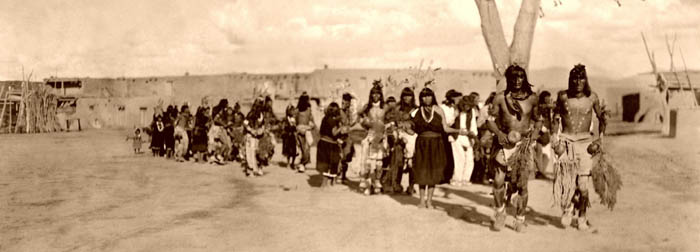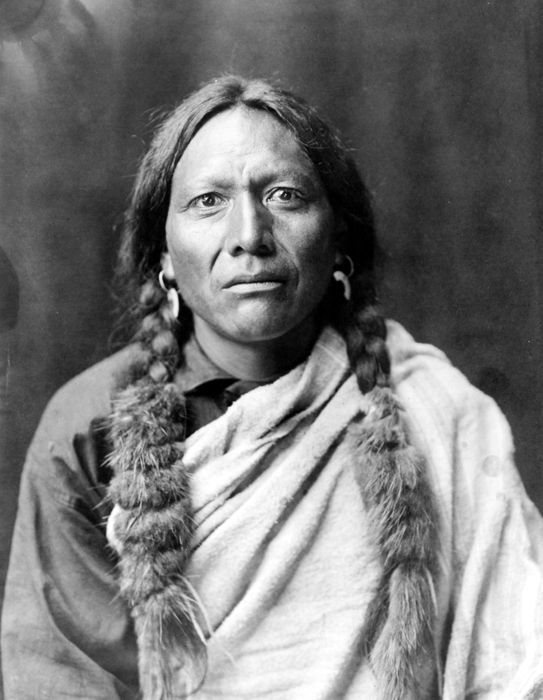
Guardians of the Earth and Echoes of Ancestors: The Enduring Legacy of the Tewa Puebloans
In the high desert of northern New Mexico, where the Sangre de Cristo Mountains cast long shadows over the Rio Grande, lie ancient villages that whisper tales of millennia. These are the homes of the Tewa Puebloans, a people whose roots delve deep into the earth, stretching back to a time before recorded history, before Spanish conquistadors, and before American expansion. Their story is not just one of survival, but of profound resilience, vibrant cultural preservation, and an unwavering connection to their ancestral lands, embodying a spirit as enduring as the adobe walls of their pueblos.
The Tewa, one of the Tanoan-speaking groups of the Southwest, inhabit six distinct pueblos: Ohkay Owingeh (formerly San Juan Pueblo), San Ildefonso, Santa Clara, Nambe, Pojoaque, and Tesuque. Each pueblo possesses its unique character and governance, yet they share a common linguistic heritage and a deep cultural tapestry woven from ancient traditions, spiritual practices, and a communal way of life that has resisted centuries of external pressures. To understand the Tewa is to journey through a landscape steeped in time, where the past is not merely remembered but actively lived.
Deep Roots: A Tapestry Woven by Time

The ancestors of the Tewa were part of the broader Ancestral Puebloan cultures, often referred to as Anasazi, who flourished across the Four Corners region, constructing the monumental cliff dwellings and mesa-top cities of Chaco Canyon and Mesa Verde. Around 1300 CE, likely due to a combination of climate change, resource depletion, and social shifts, these ancestral communities began migrating south, eventually settling along the life-giving Rio Grande and its tributaries. It was here, in the fertile river valleys, that the distinct Tewa communities began to take shape, building multi-story adobe and stone structures that were both homes and fortresses, perfectly adapted to their environment.
For centuries, these communities thrived, cultivating corn, beans, and squash, developing sophisticated irrigation systems, and creating exquisite pottery, textiles, and ceremonial objects. Their lives were governed by the cycles of the seasons, the movements of the stars, and an intricate spiritual relationship with the land, water, and sky. "Our land is not just dirt and rocks," explains Octavius Trujillo, a cultural elder from Ohkay Owingeh, his voice raspy with age, "it is our mother, our church, our library. Every mountain, every stream, every plant has a story, a teaching, a spirit." This profound connection to place remains a cornerstone of Tewa identity.
The Clash of Worlds: Spanish Arrival and the Pueblo Revolt
The tranquility of Tewa life was shattered in 1598 with the arrival of Don Juan de Oñate and his Spanish colonizers. Ohkay Owingeh, then known as Ohkay, became the first Spanish capital in New Mexico, renamed San Juan de los Caballeros. The Spanish brought with them new technologies, but also a fervent desire for land, labor, and souls. The Tewa, along with other Pueblo peoples, endured forced conversion to Catholicism, suppression of their traditional religious practices, demands for tribute in goods and labor, and brutal punishments for non-compliance. Missionaries sought to dismantle the very fabric of their society, viewing traditional ceremonies as idolatry.
This period of oppression, lasting nearly eight decades, simmered with resentment. The Pueblo people, usually fiercely independent and often at odds with each other, recognized a common enemy. In 1680, under the leadership of Popé, a spiritual leader from Ohkay Owingeh, an extraordinary uprising erupted: the Pueblo Revolt. This meticulously planned and coordinated rebellion saw all the Pueblo communities, from Taos in the north to the Hopi in the west, rise simultaneously. The Tewa pueblos played a pivotal role, given their proximity to the Spanish capital and their deep-seated grievances.
The revolt was an astonishing success. The Spanish were driven out of New Mexico entirely, retreating to El Paso. For 12 years, the Pueblos regained their sovereignty, cleansing their communities of Spanish influence and rekindling their ancient traditions. This was a singular event in North American history – a successful, indigenous, multi-tribal rebellion that expelled a colonial power. "The Pueblo Revolt wasn’t just about fighting," notes historian Dr. Estevan Arellano, "it was about reclaiming identity, language, and spiritual freedom. It showed the world the immense power of unity and the enduring spirit of these people."
Resilience and Adaptation: Navigating New Eras
While the Spanish reconquered New Mexico in 1692-96, their return was marked by a more cautious approach. Having learned a harsh lesson, they were less aggressive in suppressing Pueblo religions and more willing to grant land titles, recognizing the Pueblos as distinct communities. This subtle shift allowed the Tewa and other Pueblos to maintain a delicate balance, outwardly adopting some Spanish customs while fiercely guarding their core cultural practices in secret.

The subsequent arrival of the Americans in the mid-19th century brought new challenges: land encroachment, the imposition of boarding schools designed to "kill the Indian to save the man," and federal policies aimed at assimilation. Yet, the Tewa continued to adapt, innovate, and preserve. Their adobe architecture, once a necessity, became a symbol of continuity. Their pottery, initially for utilitarian purposes, evolved into a celebrated art form, finding new markets and appreciation while retaining its cultural significance.
The Beating Heart: Tewa Culture Today
Today, the Tewa pueblos are vibrant, living communities, each a testament to the power of cultural endurance. Language remains a critical identifier. While English is widely spoken, efforts to preserve and revitalize the Tewa language are paramount. Language immersion programs, oral histories, and the transmission of traditional songs and stories are vital for intergenerational continuity. As a young Tewa language teacher, Alana Pino, asserts, "Our language isn’t just words; it’s the rhythm of our ancestors, the way our world is understood. If we lose it, we lose a part of our soul."
Art is another powerful expression of Tewa identity. San Ildefonso Pueblo, in particular, is world-renowned for its black-on-black pottery, largely popularized by the legendary Maria Martinez (1887-1980) and her husband Julian. Their innovation in firing techniques and design brought Tewa pottery to international acclaim, transforming it from a functional craft into a fine art. Today, generations of Tewa potters continue this legacy, each piece a tangible link to their heritage, often incorporating ancient symbols and designs passed down through families. Similarly, Santa Clara Pueblo is celebrated for its distinctive red and black pottery, often featuring carved designs. Weaving, jewelry making, and painting also thrive, each art form telling a story of the Tewa people.
Ceremonial life, though often private and not openly shared with outsiders, remains the spiritual core of the Tewa pueblos. Dances, performed at specific times of the year—such as the Corn Dance, Buffalo Dance, or Deer Dance—are not mere performances but sacred prayers for rain, good harvests, and communal well-being. These ceremonies reinforce the Tewa dualistic worldview, often divided into "Summer People" and "Winter People," who traditionally govern the community during different halves of the year, symbolizing balance and harmony. The kiva, a subterranean ceremonial chamber, remains a sacred space for spiritual practices and community gatherings.
Challenges and the Path Forward
Despite their enduring strength, the Tewa pueblos face contemporary challenges common to many indigenous communities. Economic development often clashes with the desire to preserve traditional ways of life. Unemployment and limited opportunities can lead to out-migration, threatening the demographic balance of the pueblos. Water rights, a critical issue in the arid Southwest, are constantly negotiated and defended, as access to water is essential for both traditional agriculture and modern development.
Land claims and the protection of sacred sites are ongoing struggles. The encroachment of modern society, the presence of national laboratories nearby, and the pressures of tourism present a delicate balancing act. While tourism offers economic benefits, it also requires careful management to ensure cultural integrity and privacy are respected.
Yet, the Tewa look to the future with determination. Tribal governments are increasingly asserting their sovereignty, managing their own resources, developing their economies, and providing services for their communities. Education, both traditional and Western, is highly valued, with many young Tewa pursuing higher education while remaining connected to their cultural roots. Initiatives to teach Tewa language, culture, and history to younger generations are flourishing, ensuring that the wisdom of their ancestors continues to guide them.
An Unbroken Thread
The story of the Tewa Puebloans is a powerful narrative of survival, adaptation, and cultural vibrancy. From their ancient origins along the Rio Grande to their pivotal role in the Pueblo Revolt, and through centuries of navigating colonial and modern pressures, they have held fast to their identity. Their adobe homes stand as monuments to a continuous occupation, their language a living echo of their ancestors, and their art a testament to their creative spirit.
As the sun sets over the Sangre de Cristo Mountains, casting the pueblos in a warm, golden glow, one can almost hear the faint drumbeats of ancient dances, the rustle of cornstalks, and the quiet wisdom of generations. The Tewa Puebloans are not relics of the past; they are a dynamic, living culture, continually weaving new threads into their ancient tapestry, guardians of the earth and the enduring echoes of their ancestors, forever rooted in the heart of New Mexico.


